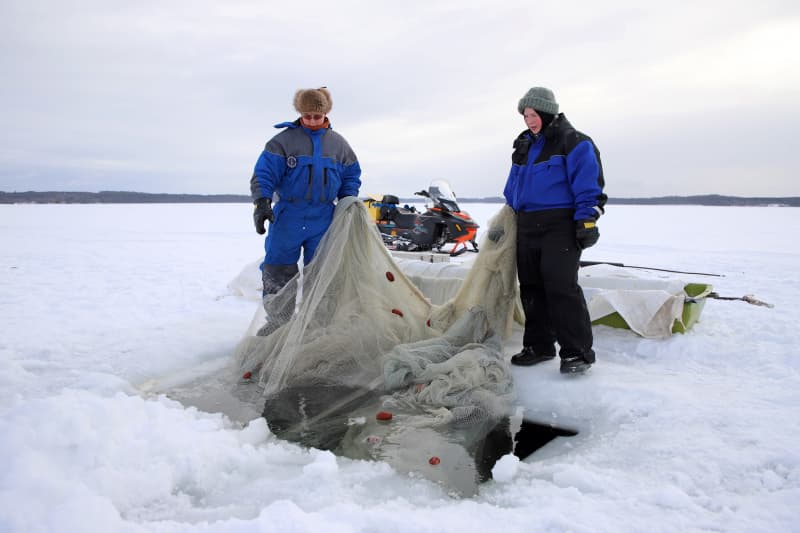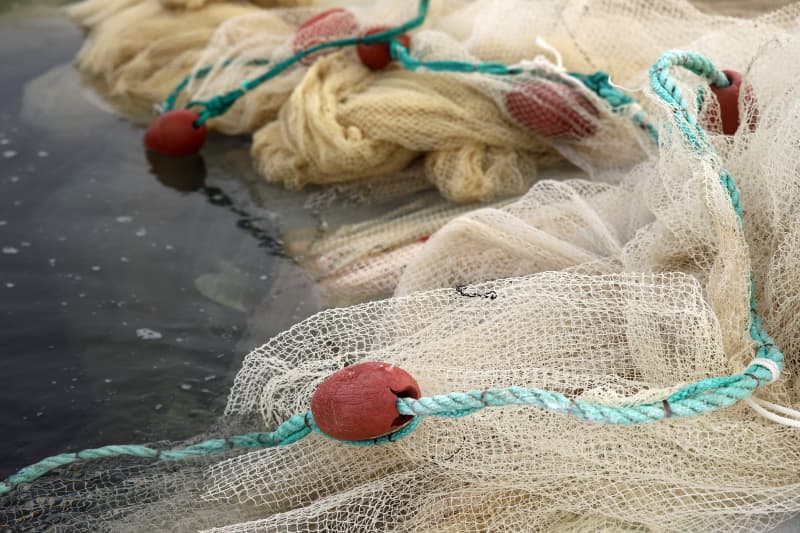
The seining tradition is fading due to the lack of professional fishermen. The effects of climate change can be seen in changed ice and wind conditions.
Lumimuutos (http://www.lumi.fi/), which fishes in Puruvedi, is unusually young in its age structure. Three of the members of the four-member crew are young people aged 25–35.
As a seiner, Lehtimäki is as rare a sight as the Saimaa grouse. If there are few young people as seiners, there are even fewer women.
Lehtimäki says that he started working in Muiku as a cleaner a couple of years ago. Winter harvesting is already going smoothly.
– The ice conditions have been quite challenging these two winters: weeks and even days can be very different.
Mustonen is also a climate researcher with twenty years of experience in winter harvesting.
Climate change has shortened the time of winter swimming: the lake freezes later and the ice leaves earlier in the spring. At least a third of the noting time has been lost.
– If you look at old notation statistics, at worst even half of the notation time has passed, says Mustonen.

Mustonen is one of the main authors of the latest assessment report of the International Climate Panel. He has seen the changes in the state of the water body up close.
– In the bay areas, eutrophication and darkening of the waters have started due to the load on the catchment area.
Puruvesi, also called the pearl of Saimaa, is loaded as a result of forestry, agriculture and land use.
Another risk that fishermen have noticed for a long time is changing winds.
– Muikku’s chick lives its first weeks in the coastal water. Strong waves across the back can cause chick deaths, says Mustonen.

Tero Mustonen describes the past winter as strange. The capricious ice formation has lengthened seining days: the apai’s pull is more difficult.
– Sludge formed under the ice accumulates in seining aids, spreaders and floats, and even in the seine. When it’s wet and damp, the string weighs a lot, says Mustonen.

What is the fate of the mug?
Puruvesi is famous for its clear water and its smell, but now both are in trouble. According to Mustone’s estimate, the visibility depth of Karu lake is 8–10 meters in the back waters.
– Puruvesi is sensitive to changes. The water turnover is very slow, and there are problems ahead as eutrophication progresses.
The flounder, which belongs to the salmon family, spawns in underwater spawning holes in autumn. In order to survive the winter, the murky eggs need the oxygenated water of the bottom currents.
– If the water quality or the amount of oxygen deteriorates, it will be reflected in the number of hatchlings.
Puruvesi muikku and seining as a traditional cultural catch received EU name protection ten years ago.
Seining maintains good water quality
The association Pro Puruvesi, which promotes the purity and well-being of Puruvesi, has carried out EU-funded renovations of catchment areas.
Winter seining also plays a role in the maintenance of the lake as a form of sustainable fishing.
– At best, seining removes four hundred tons of silt, and that is a significant removal of nutrients, says Mustonen.
Seining can also be used to revive muddy spawning areas.

The low price of fish drives away professional fishermen
The sustainability of muikku populations is also important for professional fishermen, whose numbers have collapsed. The low price of fish does not attract young people to the industry.
Karoliina Lehtimäki hopes that the value of muikku would be raised and appreciated.
– In my opinion, it’s up to the consumers that it’s not always Norwegian salmon that they grab from the store. The price of Muiku should be increased.

Tero Mustonen says that the price of muikku is ridiculously low.
– A fisherman gets one euro per kilo for a round, i.e. unreeled, seine, and it cannot be used to spin the seining.
Other means must be found, such as fish breeding.
– We also process the fish, so you can get around 12 euros per kilo in direct sales, says Mustonen.
*You can discuss the topic until Thursday 9.3. until 23:00.*

